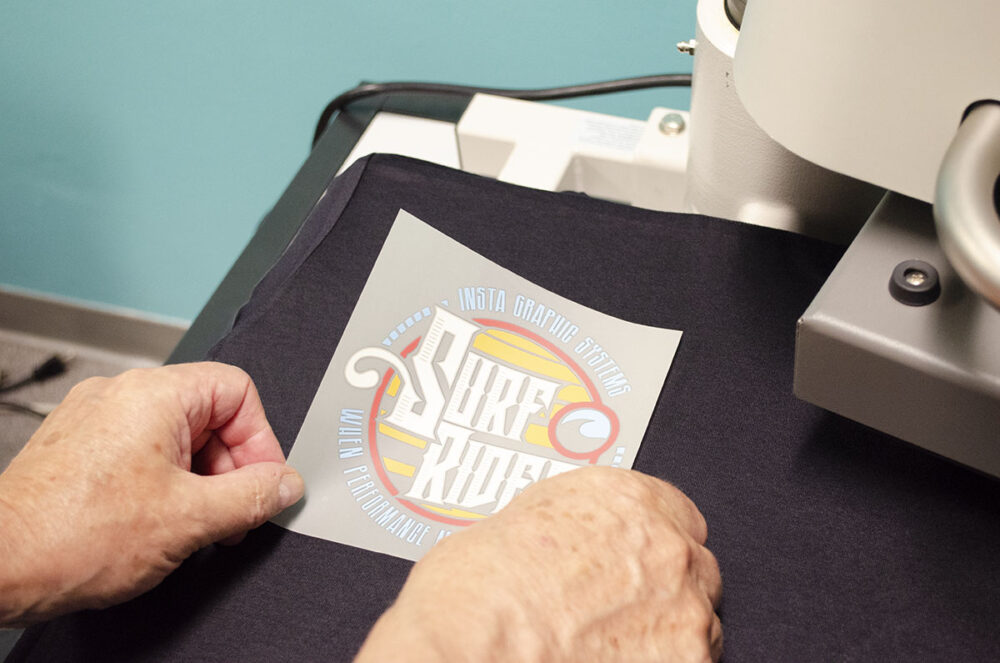Heat Transfer Vinyl vs. Sublimation; most common procedures for designing fabrics and cups respectively. Htv vs sublimation with their own set of advantages and disadvantages. Which one suits you best?
Heat Transfer Vinyl (HTV) and sublimation are in common use nowadays. In this article, we will discuss different features regarding Sublimation vs HTV.
It’s important to know key points regarding HTV vs sublimation in choosing proper printing method. HTV is used for decorating fabrics through heat application. While Sublimation is printing process that uses special inks and heat press to transfer dye onto polyester.
Vinyl vs sublimation comes with their own advantages and disadvantages;
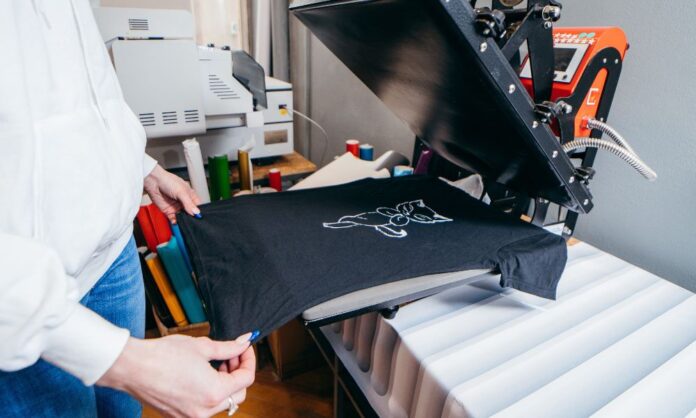
Advantages of Heat Transfer Vinyl:
Versatility: Heat transfer vinyl is available in various colors, and textures, allowing for a huge range of design. It can be used on different fabrics like cotton, polyester, and blends.
Customization: HTV allows for easy customization of apparel, making it perfect for gifts and team uniforms etc.
Easy to Use: HTV is very easy to use, especially with a cutting machine. Once the design is cut, it can be easily applied to the fabric by applying heat.
Durability: If properly used and cared, HTV designs can withstand multiple washes and maintain their colors.
No Background: Unlike screen printing, HTV does not require a background cover. The design is cut as a single piece, making the final product look professional.
Disadvantages of Heat Transfer Vinyl:
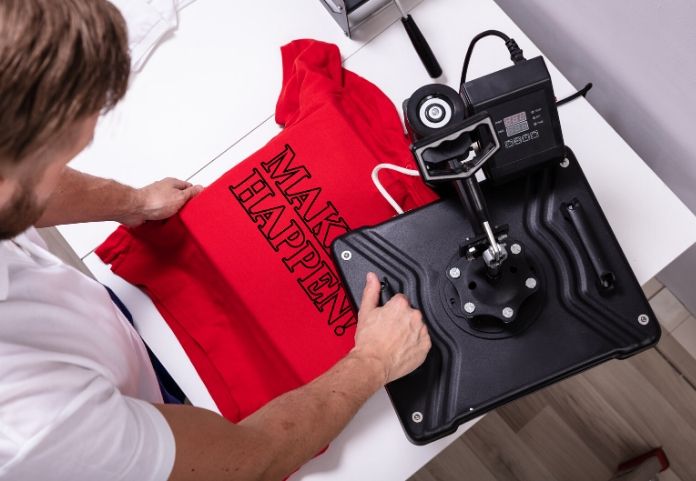
Limited Detail: Fine details and complex forms may not work well with the material, leading to possible issues during the application process.
Texture: Some types of HTV may result in a slightly raised or textured feel on the fabric, which can be noticeable and may not be preferred by some customers.
Complexity: In the case of multi-colored designs with HTV, layering can be challenging. Proper alignment is crucial to achieving a clean and professional look. So in the regard of vinyl vs sublimation, sublimation is much better than HTV.
May get expensive: Household iron can be used, but a heat press is required and sometimes recommended for applying HTV. This makes it expensive.
Breathability: Depending on the thickness and type of HTV used, it may reduce the breathability of the fabric.
Advantages of Sublimation:
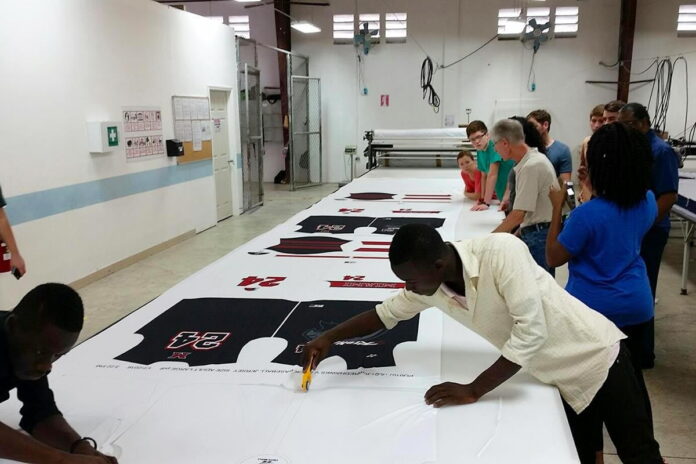
Vibrant and Permanent Prints: Sublimation produces high-quality, full-color prints with vibrant and rich colors. By sublimation the dye becomes a part of the substrate, resulting in prints that are highly durable.
Seamless Printing: Sublimation allows for printing all over the substrate without leaving any visible boundaries or edges.
Breathability: considering sublimation vs HTV, sublimation does not add any additional layer to the fabric, preserving its breathability and comfort. This makes it suitable for sportswear and other active apparel.
No Color Limitations: Sublimation can produce designs with an unlimited number of colors, gradients, and shades, making designers more creative.
Eco-friendly: Sublimation uses water-based inks, which are considered more environmentally friendly compared to some other printing methods that use solvent-based inks.
Disadvantages of Sublimation:
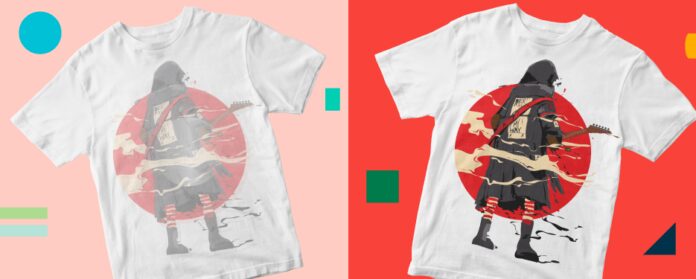
Limited Substrate Compatibility: Sublimation can only be used on specific substrates with a high polyester content or polymer-coated surfaces. It will not work effectively on natural fabrics like cotton or on non-polymer-coated materials.
Initial Investment: Setting up a sublimation printing system requires a major initial investment in specialized equipment, such as sublimation printers, heat presses, and inks. Noting about HTV vs sublimation, sublimation appears to be more expensive than HTV.
Substrate Color Limitations: Sublimation ink is transparent, which means it works best on white or light-colored substrates. When printing on dark fabrics, a white base layer is required, which adds an extra step and cost to the printing process.
Limited Applications: While sublimation is excellent for apparel, accessories, and certain promotional items, it may not be suitable for all types of products or materials.
Image Distortions: Sublimation can cause slight distortions in the final print due to the nature of the heat transfer process. This can be more noticeable in certain designs or on specific substrates.
Materials needed to make short sleeves
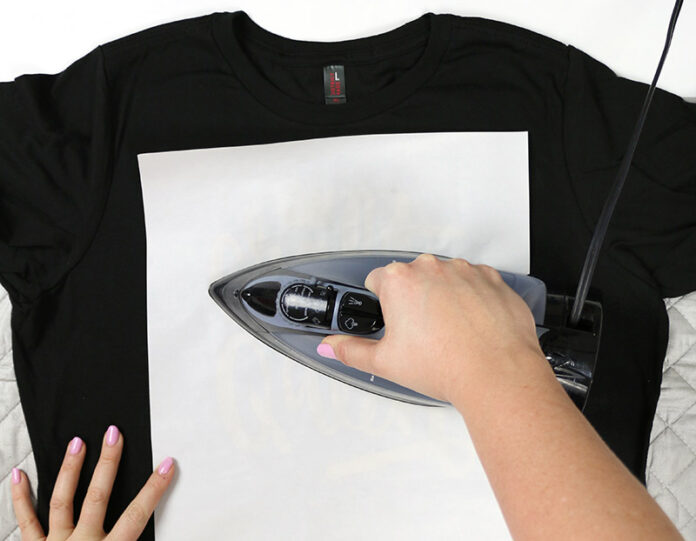
- T-shirt (fabric) or cup
- Heat Transfer Vinyl (HTV)
- Scissors and pins
- Cutting Machine or Craft Knife
- Weeding Tools
- Heat Press or Household Iron
- Teflon Sheet or Parchment Paper
Materials needed for sublimation on cups
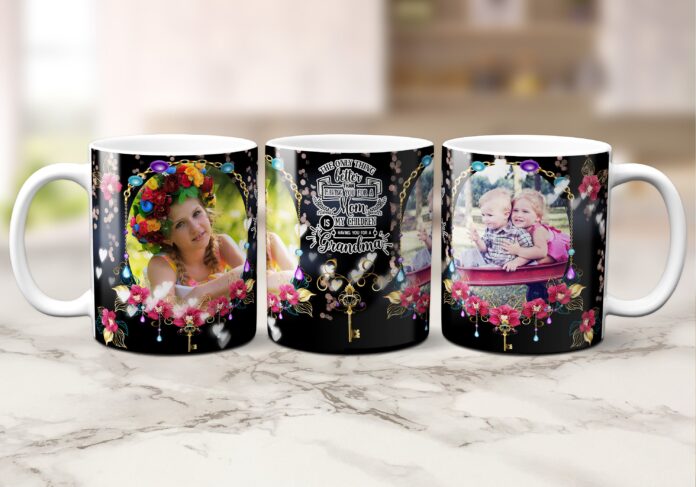
- Sublimation Printer
- Sublimation Paper
- Sublimation Inks
- Heat-Resistant Tape
- Sublimation Heat Press
- Polyester-Coated Cups
- Heat-Resistant Gloves
- Heat-Resistant Pad
- Protective Coating Spray (optional)
Make your own T-shirt with vinyl
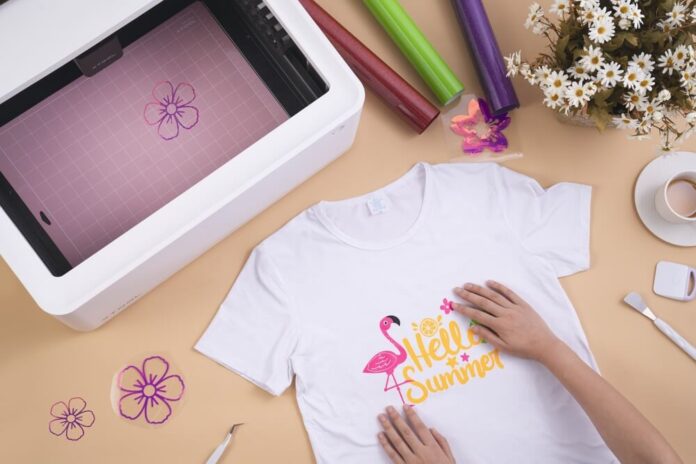
First, create a design or select it from avaialable designs and cut onto the HTV using a vinyl cutting machine or craft knife.
Weed away the excess vinyl, leaving the desired design on a clear backing.
Preheat the fabric to remove any moisture and wrinkles, and place the HTV design on the fabric.
A heat press or household iron is used to apply heat and pressure, activating the adhesive and permanently bonding the vinyl to the fabric.
After peeling off the clear backing, the custom design is complete, creating vibrant and durable designs on the fabric.
Make your mug with sublimation
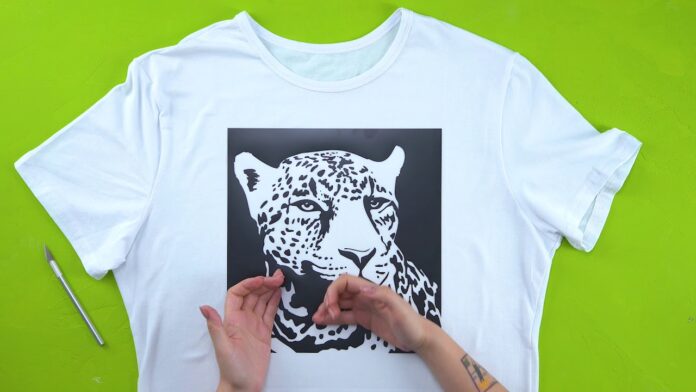
To make a mug through sublimation, first, design or select the desired image using sublimation software.
Print the image onto sublimation transfer paper using a sublimation printer and inks.
Preheat the sublimation heat press to the appropriate temperature.
Wrap the printed transfer paper around the polyester-coated mug, securing it with heat-resistant tape.
Place the mug in the heat press, apply even pressure, and set the timer according to the manufacturer’s guidelines.
Once the time is up, remove the mug from the heat press and let it cool. Peel off the transfer paper to reveal the permanent, vibrant, and durable sublimated design on the mug.
Summary
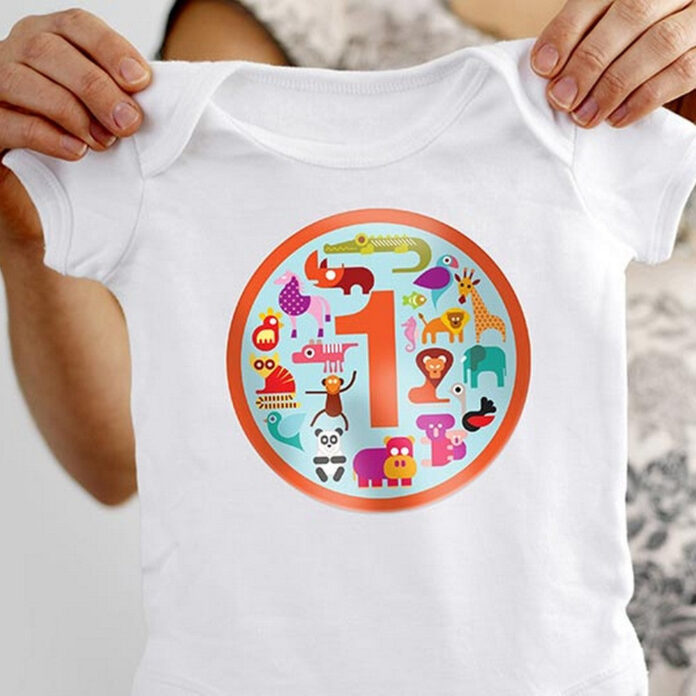
HTV vs sublimation is an interesting topic to be discussed. One needs to know much more about these two procedures to considerably understand vinyl vs sublimation. Here is a brief summary of sublimation vs HTV
HTV (Heat Transfer Vinyl) is a method of customizing fabrics using vinyl with adhesive backing, applied with heat and pressure. It works best for simple designs on various fabric types. Sublimation, on the other hand, uses special inks that turn into gas under heat. It allows for full-color, all-over prints on specific substrates like polyester garments and coated mugs. Sublimation offers more vibrant and durable results but requires specialized equipment while HTV is versatile and easy to use but has limitations on design complexity and fabric compatibility.

